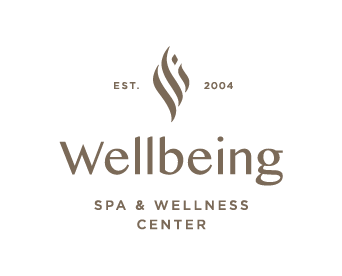
The Profound Impact of Spa Environments on Emotional Healing: How a Therapeutic Spa Atmosphere Transforms the Mind and Spirit

In today’s fast-paced and stress-filled world, emotional wellness has become just as important as physical health. People are increasingly searching for ways to restore balance, peace, and emotional clarity — and one of the most effective paths to this recovery lies in the healing spa atmosphere.
Modern spas are no longer just places for massages and facials; they’ve evolved into sanctuaries designed to nurture emotional wellness and holistic balance. A therapeutic spa environment uses sensory elements like lighting, sound, touch, warmth, and silence to help people unwind, heal, and rediscover inner calm.
In this comprehensive guide, we explore how specific elements of a spa — from sound therapy and warm water treatments to textures and scent — can profoundly influence your mood, emotions, and overall sense of well-being.
1. Understanding Emotional Healing in a Spa Setting

Emotional healing refers to the process of releasing negative emotions, reducing stress, and restoring mental harmony. When we’re emotionally balanced, our bodies function better, our thoughts become clearer, and our relationships improve.
The healing spa atmosphere plays a vital role in supporting this transformation. Unlike clinical therapy settings, spas offer a multi-sensory experience that connects the body and mind. Each element — from lighting to silence — is carefully designed to soothe the nervous system, lower cortisol levels, and promote relaxation.
Many guests report feeling emotionally lighter after spa treatments, not only because of the physical relief they experience but also because of the therapeutic environment that allows them to feel safe, nurtured, and grounded.
2. The Science Behind Emotional Wellness Treatments
Scientific studies support the emotional benefits of spa therapies. Warm water, gentle sounds, aromatherapy, and touch stimulate the parasympathetic nervous system — the body’s “rest and digest” mode — leading to slower heart rates, lower blood pressure, and a sense of tranquility.
When this relaxation response is triggered, emotional tension melts away. Regular visits to a therapeutic spa environment can reduce anxiety, improve sleep, and increase the production of feel-good hormones such as serotonin and dopamine.
In this sense, emotional wellness treatments are not just luxuries — they are holistic health practices that support psychological and physical recovery.
3. The Power of Lighting in a Healing Spa Atmosphere

Lighting is one of the most subtle yet powerful tools for emotional transformation. In a healing spa atmosphere, lighting is intentionally soft, warm, and adjustable to create a sense of comfort and security.
3.1. The Psychology of Light
Harsh, bright lights activate alertness and can make guests feel exposed or restless. On the other hand, soft golden tones, dim candlelight, and natural sunlight filtering through blinds promote calmness and inner focus.
Warm lighting mimics the gentle glow of sunrise or sunset — times when our minds are naturally more relaxed. This helps guests transition from a state of stress to one of serenity.
3.2. Chromotherapy (Color Light Therapy)
Many spas also incorporate chromotherapy, a form of light therapy that uses colors to influence mood and emotional states.
- Blue light calms the mind and relieves anxiety.
- Green light promotes harmony and emotional balance.
- Pink or rose hues evoke feelings of love and compassion.
- Amber and orange tones energize while maintaining warmth.
Together, these lighting effects form a therapeutic spa environment where emotions are gently guided toward healing and inner peace.
4. The Role of Sound Therapy in Emotional Wellness Treatments

Sound has an extraordinary influence on human emotions. In spa environments, sound therapy is used to harmonize the body’s energy and release mental tension.
4.1. The Science of Healing Sounds
Scientific research has shown that certain frequencies and rhythms can slow down brain waves, promoting meditative and restorative states. The gentle rhythm of ocean waves, the rustle of leaves, or soft instrumental music helps synchronize breathing and heart rate.
When sound is used intentionally, it becomes more than background noise — it becomes a form of therapy.
4.2. Sound Therapy Techniques
Many spas use:
- Tibetan singing bowls to balance energy and clear emotional blockages.
- Gongs for deep meditation and vibrational healing.
- Nature sounds like birds, rain, or waterfalls to connect guests with the natural world.
These sounds induce a meditative state, allowing emotions like sadness, anger, or anxiety to dissolve naturally. The mind slows down, and a deep sense of inner peace takes over — a key component of any healing spa atmosphere.
5. Textures, Touch, and the Sense of Comfort

Textures and touch are essential for creating a therapeutic spa environment that promotes emotional healing. Humans have an innate need for physical comfort; soft, warm, and natural materials can evoke feelings of safety and care.
5.1. Textures in the Environment
The spa’s physical design — from smooth stones and soft towels to natural wood and linen — is deliberately chosen to provide tactile comfort. When the skin encounters pleasant textures, the brain releases oxytocin, a hormone associated with trust and relaxation.
Even the flooring, furniture, and robes contribute to the emotional experience. A soft robe, a warm blanket, or a smooth massage table cover can make guests feel nurtured and cared for.
5.2. Healing Through Touch
Touch itself is one of the most direct paths to emotional healing. Massage, body wraps, or even gentle pressure from a therapist’s hands activate the body’s parasympathetic system.
This form of emotional wellness treatment is deeply therapeutic — it encourages emotional release, helps overcome loneliness, and fosters a sense of human connection. For many, a healing touch can speak louder than words.
6. The Silent Power of Stillness and Reflection
In our modern world filled with noise and constant stimulation, silence has become a rare luxury. Yet, in a healing spa atmosphere, silence is one of the most powerful tools for emotional recovery.
6.1. The Emotional Impact of Silence
Silence allows the nervous system to rest and the mind to process suppressed emotions. When external distractions disappear, people begin to reconnect with their inner world — often leading to moments of clarity or emotional release.
6.2. Designing for Stillness
High-quality spas design their spaces to minimize external noise. Thick walls, soft materials, and careful layout planning ensure quiet zones where guests can meditate or simply breathe deeply.
In these silent moments, the therapeutic spa environment becomes a refuge for the soul — a place where peace and mindfulness replace mental clutter and emotional tension.
7. The Healing Energy of Warm Water

Few sensations are as soothing as immersion in warm water. Hydrotherapy — the use of water for healing — is one of the oldest wellness practices in human history. In a therapeutic spa environment, warm water plays a central role in promoting both physical and emotional healing.
7.1. The Science of Hydrotherapy
Warm water relaxes muscles, improves circulation, and reduces stress hormone levels. It also stimulates the release of endorphins, the body’s natural mood enhancers.
7.2. Emotional Benefits
Immersion in warm water provides a feeling of weightlessness and comfort, similar to being held or supported. This can evoke early feelings of safety and care, helping the mind let go of emotional burdens.
Whether through a jacuzzi, thermal pool, Vichy shower, or hot stone bath, warm water offers a sensory experience that resets the nervous system and uplifts the spirit.
8. Aromatherapy: Scents That Heal Emotions
While not mentioned in the initial list, aromatherapy deserves recognition for its immense impact on mood and emotions. Scent directly influences the brain’s limbic system — the emotional control center.
8.1. The Role of Scent in Emotional Wellness Treatments
- Lavender reduces anxiety and promotes calmness.
- Eucalyptus clears the mind and supports breathing.
- Sandalwood grounds and stabilizes emotions.
- Rose fosters love, compassion, and emotional release.
When combined with massage or steam therapy, essential oils create a healing spa atmosphere that engages memory, emotion, and sensory pleasure all at once.
9. The Psychology of Design in a Therapeutic Spa Environment
Beyond individual elements, the overall spa design profoundly affects emotional well-being. A harmonious layout, use of natural elements, and thoughtful flow create an intuitive feeling of relaxation.
9.1. Biophilic Design
Modern spas increasingly use biophilic design, which connects guests with nature through materials, greenery, and open spaces. Natural light, plants, stones, and water features help reduce anxiety and evoke feelings of safety and belonging.
9.2. Minimalism and Balance
Cluttered environments create mental stress. A minimalist spa design — clean lines, neutral colors, and balanced symmetry — communicates calmness. Guests subconsciously associate these spaces with order, peace, and emotional clarity.
Together, these principles form the foundation of an authentic therapeutic spa environment — one that not only looks beautiful but also feels healing on a deeper, emotional level.
10. How a Healing Spa Atmosphere Promotes Long-Term Emotional Wellness

The emotional benefits of spa therapy extend far beyond the treatment room. A single visit may bring immediate calm, but regular exposure to a healing spa atmosphere helps build long-term emotional resilience.
10.1. Stress Reduction and Mental Clarity
Regular spa visits train the body to enter a relaxed state more easily. This reduces chronic stress and promotes better emotional regulation in daily life.
10.2. Improved Relationships and Self-Awareness
When people feel emotionally balanced, they communicate better, make clearer decisions, and approach relationships with more empathy. Spa therapy often helps guests reconnect with their own emotions, leading to improved confidence and self-awareness.
10.3. Supporting Trauma Recovery
Some forms of emotional wellness treatments — such as sound baths, float therapy, or guided meditation — are used as complementary practices for trauma recovery. They create a safe environment for emotional release without verbal confrontation.
Over time, guests report improved sleep, mood stability, and a stronger sense of inner peace.
11. Integrating Spa Principles into Everyday Life
You don’t have to visit a luxury spa every week to benefit from these practices. With awareness, anyone can recreate aspects of a therapeutic spa environment at home.
11.1. Lighting
Use warm, soft lighting in your bedroom or relaxation space. Avoid harsh overhead lights, especially in the evening.
11.2. Sound
Play gentle nature sounds or meditative music during rest periods. Silence your devices and create short moments of stillness throughout the day.
11.3. Textures and Warmth
Surround yourself with soft fabrics, cozy blankets, and natural materials that invite comfort.
11.4. Warm Water Rituals
Take relaxing baths with Epsom salts or essential oils to release tension and soothe the mind.
By integrating these small habits, you can cultivate your own healing spa atmosphere wherever you are — supporting daily emotional balance and inner calm.
12. Why the Future of Wellness Is Emotional Healing
The wellness industry continues to evolve, and emotional well-being has become its new frontier. Today’s travelers and wellness seekers aren’t just chasing physical beauty; they are searching for therapeutic spa environments that nurture their mental and emotional states.
Spas that invest in creating truly healing atmospheres — focusing on emotional safety, sensory design, and holistic treatments — will continue to attract those seeking transformation, not just relaxation.
Emotional wellness treatments are more than trends; they are responses to a growing human need for connection, stillness, and renewal in an overstimulated world.
Conclusion: The Transformative Power of a Healing Spa Atmosphere

A visit to a spa can be far more than a moment of indulgence — it can be a turning point in your emotional well-being. A well-crafted therapeutic spa environment uses every sensory detail — light, sound, texture, warmth, and silence — to support emotional release, balance, and deep healing.
In this space, the mind quiets, the body relaxes, and the soul finds peace. Whether you are seeking relief from stress, emotional recovery, or simply a moment of inner clarity, immersing yourself in a healing spa atmosphere can help you reconnect with yourself — and rediscover the serenity that modern life so often hides.
A spa is not just a destination; it is a journey inward — one that leads to emotional harmony, lasting well-being, and the realization that true healing begins within.






Leave a Reply